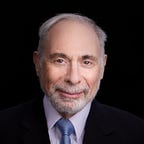Alleviating The Access To Medical Care Dilemma — A Modest Proposal Utilizing Technology
As a clarification, the more inclusive term “practitioner” is being used instead of “physician” due to the fact that currently many people are treated by physician’s assistants or nurse practitioners instead of by physicians.
It has been well documented that access to medical care is a major health issue for a great number of Americans. The causes could include lack of insurance (there are reports stating that there were still over 30 million people in the United States without health insurance as of 2020) or lack of care in their area. The COVID-19 pandemic has demonstrated that telehealth can be a viable alternative to in-office visits for many conditions.
The simplest solution would be to ask practitioners to donate time in their offices for free care. This solution is not viable because it would be a nightmare for practitioners to keep track of this separate group in their office systems. In addition, this would not help people for whom practitioner offices are not accessible. We will examine a possible scenario which is more complex but hopefully also more viable.
The proposal is that those without access to health care be given access to telehealth sessions. Patients would enroll for free but must be only those people who can demonstrate that they are without access to care as defined in the regulations setting up the program. It must be made clear that allowing anyone else access through their login information would result in their being removed from the program. All of the patient’s personal and medical information would be entered at the time of enrollment so that the practitioner has the information in front of them when meeting with the patient. Practitioners would be requested to voluntarily render free care for one hour a month at a time and day of their choosing. If too few volunteer then incentives would be devised. When a patient signs on they will enter what their problem is and utilizing AI, the system will give a list of appropriate practitioners and when they are available in local time. The patient will then book an appointment. The patient will be informed that they can reschedule the appointment but a certain number of times not showing up for the appointments will cause them to be removed from the program. There will of course be occasional legitimate reasons for a person missing an appointment but the odds of this occurring for multiple reasons on different dates is not high. The system would request feedback from the patient regarding the interaction with the practitioner as well as whether the issue was resolved which the patient would have the opportunity to submit at a later time.
The government would have to do four actions:
1) A platform would be created or chosen to be utilized with the usual security and HIPAA protections in place.
2) There would have to be a federal law stating that a practitioner licensed in any state can treat a patient in any other state and pharmacies in any state can process their prescriptions (excluding controlled substances). This would only apply to the practitioners in the program and only for interactions with patients through the program.
3) Prescriptions sent through this program would be paid for by the government at the same rate that the pharmacies would be paid by Medicare. For medications not reimbursed by Medicare, the pharmacies would be reimbursed their acquisition cost. This would ensure that the program is not overly burdensome on the pharmacies.
4) Practitioner malpractice liability coverage would be provided for any incidents arising from interactions with patients that took place as part of the program.
5) Local governments within a certain radius would be given one computer for people without computers or internet access. These computers would be usable for the program only, be in an area that is accessible 24 hours a day, and be programmed to not allow a person to book an appointment in the same time slot as someone who has previously booked an appointment on that computer in that time slot. Local not for profit organizations would be requested for volunteers to drive those with transportation issues.
The program that is being proposed is not perfect and does not totally eliminate the access to medical care issue. It does, however, begin to decrease the issue for most people.
Thank you for reading.
